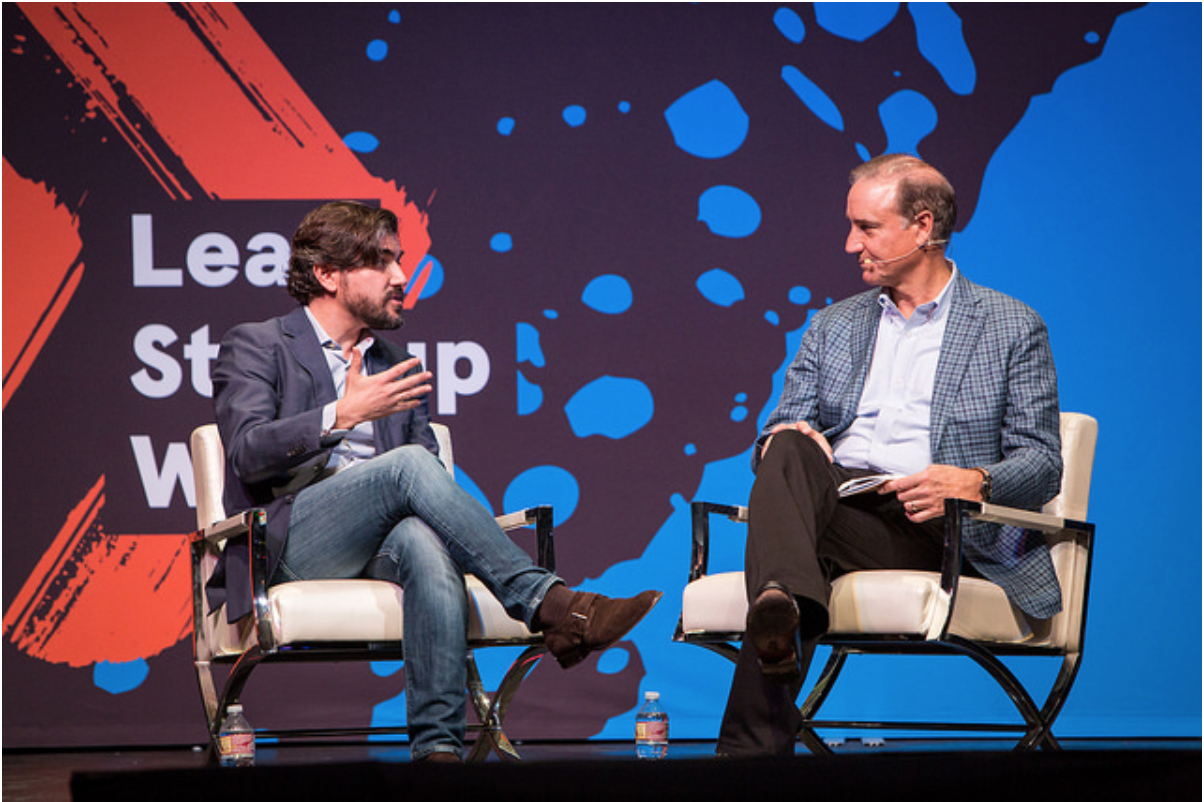How ING Increased the PACE of Innovation

Learn from Ignacio Julia Vilar, Chief Innovation Officer at ING Banking, during a fireside chat titled, “Beating Corporate Inertia to Win Big in Innovation.” Here are some key takeaways from the discussion.
Interviewer Stephen Liguori started off the conversation by asking Ignacio to explain why ING decided to make a major effort in innovation and what changes followed.
Ignacio explained that four years ago, when a new CEO came on, there was a sense that “if we don’t go faster, if we don’t evolve our business faster, we will stop being relevant for our customers,” he said.
ING quickly realized innovation was key to making that happen. However, Ignacio confessed that he finds the word innovation to be something of a “buzzword” that needs definition. “The first thing that we said is what [innovation] is not about,” he explained. It is not about gadgets or new technology, necessarily. “What you really are trying to do is create a different set of customer experiences. And the way customers interact has changed.”
They recognized that all customer interactions begin with a mobile device now, and if they didn’t reinvent the way they were doing things, they would lose touch with their customers.
To do this, they drilled down their strategy to focus on what they call “The three Cs: Customers, Cultures, and Connection.”
The Three Cs
For the first C, the customer, their first directive was to “create something really useful for the customer that solves [their needs],” Ignacio explained. He shared that their mission at ING is empowering their customers to stay a step ahead in life and business. “In other words, to help customers reach their dreams.”
Innovation is not an end by itself—it’s a means to an end, Ignacio stressed. As a result, they’ve found that “innovation has to happen close to the customer.”
In order to do this, they needed to make sure their 54,000 employees were “truly obsessed to create a different set of customer experiences,” Ignacio said. Thus, the second C, culture, was “the most important one at the end of the day.” It’s here that the innovation office had to invest a great deal of time in communicating their strategy to employees. They do this through workshops, boot camps, and embedding the messaging into the company culture, as well as through dedicated coaches that travel around to the different countries.
Ignacio explained that the most important thing to change in the culture was “the awareness that we all have many assumptions and opinions across all levels of the organization about what our customer wants or needs; and that we normally jump straight away to a solution without answering the question.”
He said they’ve tried to impress the idea that “an opinion is not a fact based direction. Unknowns with regard to the customer can only be validated with the customer.”
The third C is connection. “The last and most important thing we have tried to change is doing everything by ourselves,” Ignacio said.
Competition in FinTech is fierce. “So rather than reinvent the wheel, we needed to start partnering with [other companies] and deliver services to our customers.”
For example, if a small business using ING is looking for a line of credit, they can go to a partner company, Kabbage, apply and receive that line of credit.
In order to stay competitive Ignacio added that innovation also requires spending sufficient time, money and resources “in preparing the business model of the future.”
Increasing the PACE
For ING, the business model of the future meant changing things up so that “half of the business was being done in a new way,” a program called “ING PACE.” They chose the word pace for its simple conjuring of the idea of speed.
PACE is an iterative process that brings together Design thinking, Lean Startup and Agile Scrum in a five-phase process: Discover. Problem Fit. Solution Fit. Market Fit. Scaling.
Ignacio played a short video that describes how these three methods help the company strengthen empathy with customers, engage in rapid experimentation and validated learning to develop only what the customer needs, then bring it to market fast.
Stephen asked what inspired ING to bring together these three processes.
Ignacio explained that given the size of their company, which is already working across different countries, they realized that different teams were using with different methodologies, and they wanted to be sure that “everyone speaks the same language.”
Their efforts are paying off. In each country, once the PACE methodology is implemented, the teams become self-sufficient.
“The way we measure success is that they are asking for more [trainings], and we don’t have sufficient people to support all the demands,” Ignacio said.
Thank you to Jordan Rosenfeld for contributing this piece. If you seek to bring the entrepreneurial spirit to your organization, give a shout.
